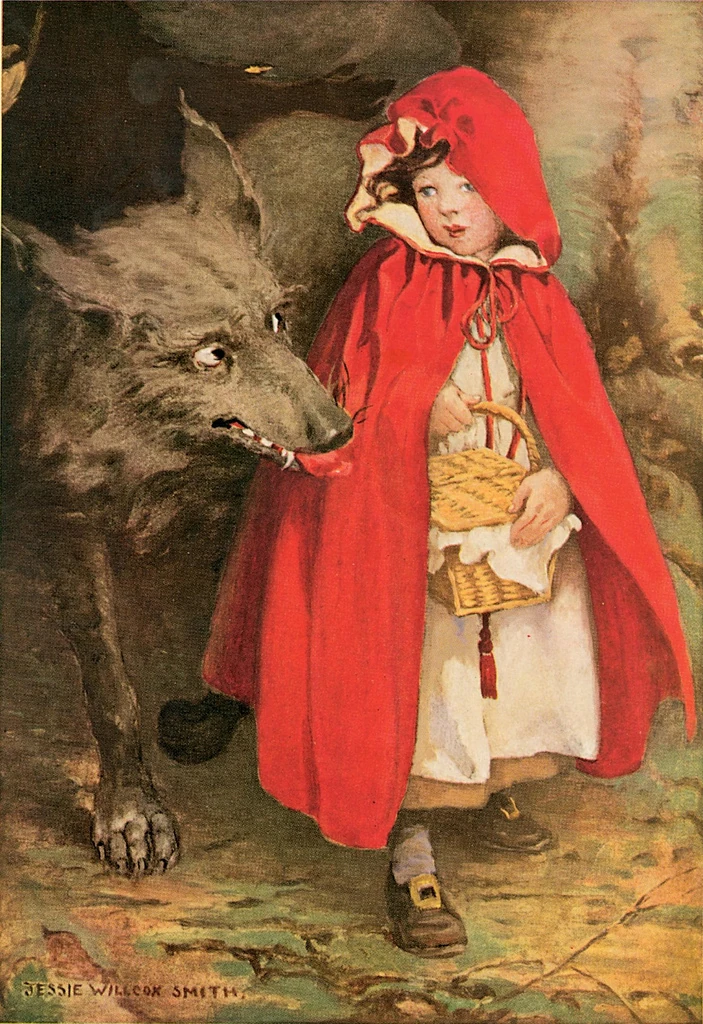Hello and welcome to Fairy Tale Friday. Are you sitting comfortably? Good. Then I’ll
begin.
This week we are looking at a retelling of Little Red
Riding Hood by Carnegie Award winner Walter de la Mare. It was first published
in his book Told Again in 1927.
His version is the only one I have come across that
address the burning question: what exactly is riding hood? Countless tales say she wears a riding hood, but she
never goes riding. Is it for horse riding? Is it for riding in a carriage? It
always seems to be pictured as attached to her red cloak, but it appears that
the hood is separate as her mother makes it for her out of a small strip of
cloth.
This story immediately reminded me of Hans Christian
Andersen’s tale The Girl Who Trod on a
Loaf which you can read HERE if you’d like. Both tales set up their heroine as a vain and shallow clothes-obsessed
young girl who was probably quite tedious to be around due to her always
banging on about how beautiful she looked and using a spoon as a mirror to
check herself out. You know the type.
Both versions set the heroine up for a downfall based
on their selfishness and vanity, but Walter de la Mare’s version does it tongue in
cheek while Andersen sends her straight to HELL (that’ll teach her!) Andersen
was rather moralistic in his tales. The Red
Shoes spring to mind—she so admires the red shoes that in church instead of
thinking of Jesus, she is thinking about how cute she looks in her red shoes.
This causes her to be CURSED and have to dance without stopping until she falls
down DEAD. She ends up begging the executioner to chop off her feet and lives a life
as a cripple with wooden feet until she repents her wickedness. You can read this tale of extreme vanity HERE.
I bet Andersen was a hoot at parties.
And what is it about the colour red that makes these women
lose their common sense?
Anyway, back to this story. Little Red Riding Hood (who
is indeed wearing a riding hood, not just a red cap) is not only vain but
greedy too. She can’t wait to offload the basket of goodies and fill it with
the jam tarts she knows her Grannie will have in her cupboard. She is so excited
thinking of the tarts, she forgets to wave goodbye to her mother.
The moment the woodcutter cuts her free from the wolf,
she rushes straight to the mirror to check that her hair isn't mussed. So clearly,
she hasn’t learned her lesson.
De la Mare ends it on a humorous note. Poor Grannie
who had been on her deathbed, gets a second wind after being so warm and
compressed inside the wolf. It did her rheumatism a world of good and she lived
another twenty years until the age of 90.
The only other thing to look out for in this version
is the archaic use of the word faggot meaning
a bundle of sticks. In the US I only heard it used in a derogatory way against
homosexuals and only saw it used to mean a bundle of sticks in fairy tales. In
the UK, however, it is still in current use to mean a sort of pork meatball
made of offal (hearts, livers, etc). A butcher’s shop on the corner of a nearby
street from our flat advertises for pork faggots and there is a brand of frozen
faggots you can buy called (rather unappetisingly) Mr Brain’s Pork Faggots. Just
a bit of linguistic trivia for you.

The only online version of Walter de la Mare’s tale
that I can find is a PDF that was scanned from the Norton Anthology of Children’s
Literature. Click HERE to read the story.
Stay tuned next week for a version from China where
two sisters outsmart a leopard who has eaten their mother and brother and returns home posing as their mother.
No comments:
Post a Comment